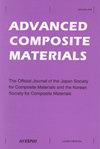Assessing thermoelectric performance of quasi 0D carbon and polyaniline nanocomposites using machine learning
IF 2.3
3区 材料科学
Q3 MATERIALS SCIENCE, COMPOSITES
引用次数: 0
Abstract
AbstractThermoelectric materials have been widely recognized as a simple approach to harness green energy by converting thermal gradients into electrical energy. However, the intricate interplay between electrical conductivity, Seebeck coefficient, and thermal conductivity in thermoelectric materials presents a challenge to improving their efficiency. Traditional experimental methods and calculation methods have troublesome steps and long cycles for predicting new thermoelectric materials. In this work we present materials informatics-based approach, where statistical and machine learning models like correlation matrix, multiple linear regression, principal component analysis and artificial neural network were employed to find the relationship between features and thermoelectric performance. Furthermore, artificial neural network was used to analyze the roles of several compositional and microstructural features along with temperature on electrical conductivity, thermal conductivity, Seebeck coefficient and thermoelectric figure of merit (ZT) for PANI and quasi 0D carbon-based composites.Keywords: Nanocompositespolyanilinecarbon nanostructuresmaterials informaticsthermoelectric performancemachine learningdata analytics AcknowledgmentsMR acknowledges the support of “University of Alberta-Tecnologico de Monterrey Seed Fund, 2022-2023” and SNI fellowship awarded by CONACyT (Grant ID 1047863).Disclosure statementNo potential conflict of interest was reported by the authors.Data availability statementThe data can be requested and accessed from the authors.利用机器学习评估准d碳和聚苯胺纳米复合材料的热电性能
摘要热电材料已被广泛认为是利用绿色能源的一种简单方法,它将热梯度转化为电能。然而,热电材料的导电性、塞贝克系数和导热系数之间复杂的相互作用对提高其效率提出了挑战。传统的实验方法和计算方法对新型热电材料的预测步骤繁琐,周期长。在这项工作中,我们提出了基于材料信息学的方法,其中使用统计和机器学习模型,如相关矩阵,多元线性回归,主成分分析和人工神经网络来寻找特征与热电性能之间的关系。此外,利用人工神经网络分析了几种成分和微观结构特征随温度变化对聚苯胺和准零碳基复合材料的电导率、导热系数、塞贝克系数和热电优值(ZT)的影响。关键词:纳米复合材料聚苯胺碳纳米结构材料信息学热电性能机器学习数据分析致谢smr感谢“阿尔伯塔大学蒙特雷种子基金,2022-2023”的支持和CONACyT授予的SNI奖学金(Grant ID 1047863)。披露声明作者未报告潜在的利益冲突。数据可用性声明可以向作者请求和访问数据。
本文章由计算机程序翻译,如有差异,请以英文原文为准。
求助全文
约1分钟内获得全文
求助全文
来源期刊

Advanced Composite Materials
工程技术-材料科学:复合
CiteScore
5.00
自引率
20.70%
发文量
54
审稿时长
3 months
期刊介绍:
"Advanced Composite Materials (ACM), a bi-monthly publication of the Japan Society for Composite Materials and the Korean Society for Composite Materials, provides an international forum for researchers, manufacturers and designers who are working in the field of composite materials and their structures. Issues contain articles on all aspects of current scientific and technological progress in this interdisciplinary field. The topics of interest are physical, chemical, mechanical and other properties of advanced composites as well as their constituent materials; experimental and theoretical studies relating microscopic to macroscopic behavior; testing and evaluation with emphasis on environmental effects and reliability; novel techniques of fabricating various types of composites and of forming structural components utilizing these materials; design and analysis for specific applications.
Advanced Composite Materials publishes refereed original research papers, review papers, technical papers and short notes as well as some translated papers originally published in the Journal of the Japan Society for Composite Materials. Issues also contain news items such as information on new materials and their processing."
 求助内容:
求助内容: 应助结果提醒方式:
应助结果提醒方式:


